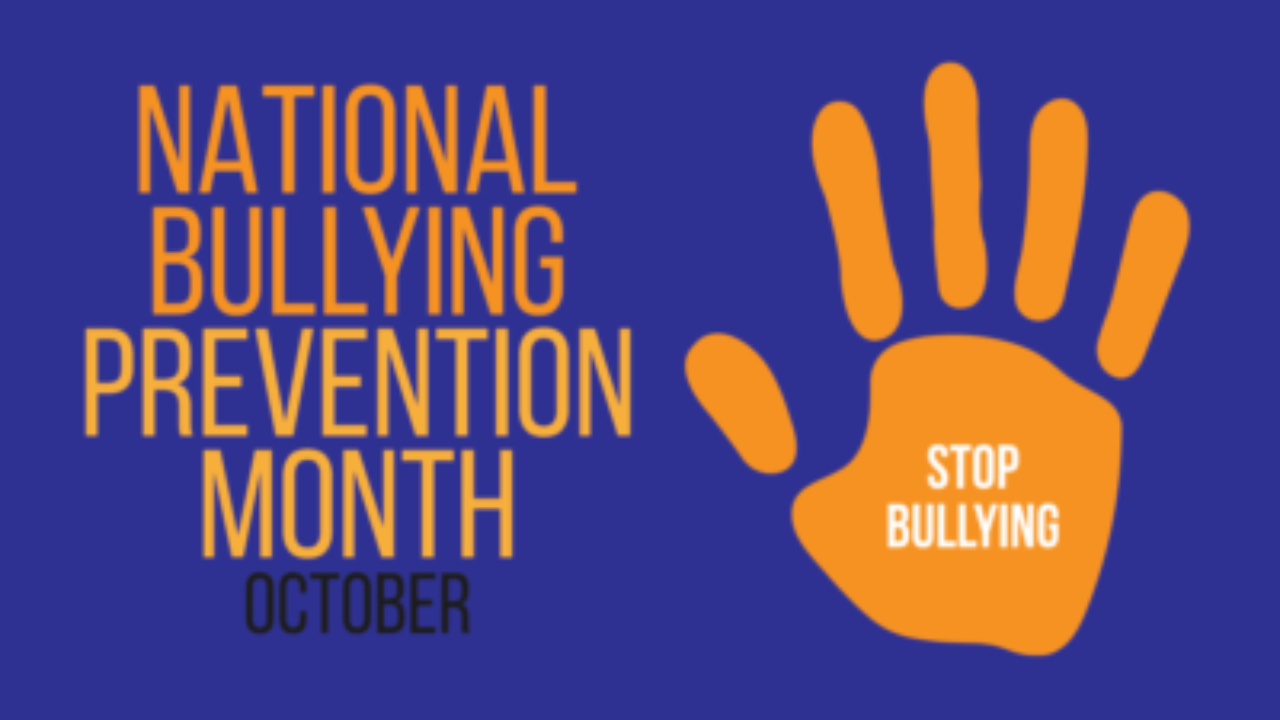National Bullying Prevention Month

Hey Village!
October is National Bullying Prevention Month
Bullying is a pervasive issue that many of our youth face on a daily basis — but let’s be clear, adults can experience bullying too. Whether it happens in schools, workplaces, or online spaces, bullying can have a lasting impact on our mental health. It’s crucial that we recognize its effects and work together to create environments that promote respect, empathy, and emotional well-being.

Studies show that only about 24% of children who experience bullying tell their parents about it. Many children remain silent out of fear, shame, or the belief that speaking up won’t make a difference — or could even make things worse.
This is why it’s so important for parents and caregivers to stay attentive to the signs of bullying, both emotional and behavioral. By creating an environment built on trust, openness, and safety, we can encourage children to share what they’re going through and get the support they need.
Reasons children don’t tell their parents:
-
- Fear of making it worse: A common fear is that involving parents will lead to retaliation from the bully.
-
- Wanting to avoid worry: Children may not want to worry their parents.
-
- Feeling unheard: Some children feel their parents won’t understand or that their family doesn’t listen to them.
-
- Belief that nothing can be done: They may feel that talking to a parent or teacher won’t change the situation

Types Of Bullying
-
- Physical – This involves punching, hitting, pinching, biting, spitting, shoving, stealing personal things, or getting into someone’s personal space when asked no to
-
- Verbal – there may be some name calling, hurtful teasing, taunting, unwanted nicknames, gossiping, racist insults or slurs, sexually or gender abusive remarks.
-
- Relational —- exclusion, humiliation, blackmailing, ignoring, manipulating friends or shunning. Cliques are a form of relation see
-
- Cyber – social media, cell phones and emails.
 Emotional and Psychological Impact
Emotional and Psychological Impact
-
- Anxiety and fear: People who are bullied often experience heightened anxiety — worrying about when it might happen again or feeling constantly “on edge.”
-
- Depression and sadness: Persistent bullying can lead to feelings of hopelessness, sadness, and loss of interest in things once enjoyed.
-
- Low self-esteem and self-worth: Being bullied repeatedly can make someone internalize the hurtful things said or done to them, leading to self-doubt or shame.
-
- Loneliness and isolation: Victims often withdraw socially, either because they fear being targeted again or because they feel rejected or different.
 Behavioral and Cognitive Effects
Behavioral and Cognitive Effects
-
- Difficulty concentrating or performing at school or work: Stress and fear can make it hard to focus, remember things, or stay motivated.
-
- Sleep problems: Nightmares, insomnia, or difficulty feeling rested are common.
-
- Changes in eating habits: Some may overeat for comfort, while others lose their appetite.
-
- Avoidance behaviors: Avoiding certain people, places, or situations (including school or work) to escape bullying-related anxiety.

Here’s a breakdown of common reasons someone may engage in bullying:
 1. Unresolved Pain or Past Trauma
1. Unresolved Pain or Past Trauma
-
- Many people who bully have themselves experienced bullying, abuse, or rejection in the past.
-
- They may act out what was done to them — a cycle of hurt where pain gets passed on to others.
-
- It can become a way to feel powerful in situations where they once felt powerless.
 2. Low Self-Esteem or Insecurity
2. Low Self-Esteem or Insecurity
-
- Some individuals bully others to mask their own insecurities or feelings of inadequacy.
-
- Putting others down temporarily makes them feel stronger, more confident, or in control.
-
- This often comes from a lack of positive self-worth or emotional validation in their lives.
 3. Need for Control or Power
3. Need for Control or Power
-
- Bullying can be a way to gain dominance, attention, or influence — especially in environments that reward aggression or competition.
-
- It can also stem from feeling powerless in other areas of life (home, relationships, academics).
 4. Environmental and Social Influences
4. Environmental and Social Influences
-
- Family environments where aggression, harsh discipline, or lack of empathy are common can normalize bullying behaviors.
-
- Peer pressure or wanting to “fit in” with a dominant group can also motivate someone to bully.
-
- Media, social media, and cultural norms that glorify dominance or ridicule can reinforce these patterns.
 5. Lack of Emotional Regulation or Empathy
5. Lack of Emotional Regulation or Empathy
-
- Some people struggle to manage anger, frustration, or jealousy in healthy ways.
-
- They might lack empathy — not fully understanding or caring how their actions impact others.
-
- Often, this comes from not having been taught emotional awareness or coping skills.
 6. Modeling and Learned Behavior
6. Modeling and Learned Behavior
-
- Children and teens often imitate what they see from adults, peers, or even characters in media.
-
- If bullying or intimidation is modeled as “normal” behavior, they may internalize it as acceptable.
 7. Social or Cultural Marginalization
7. Social or Cultural Marginalization
-
- In some cases, individuals from marginalized or unstable backgrounds may use bullying as a survival tactic — a misguided attempt to gain respect, security, or a sense of belonging.
 Understanding the “Why” Helps Us Heal
Understanding the “Why” Helps Us Heal
Recognizing why someone bullies doesn’t excuse the behavior — but it does help us respond with more understanding and effectiveness.
When we look beneath the behavior, we can:
-
- Intervene earlier
-
- Teach empathy and coping skills
-
- Break cycles of hurt
-
- And ultimately support healing for both the person being bullied and the one doing the bullying.

Oftentimes, we focus primarily on the person who is victimized by bullying — and rightly so. But I’m learning more and more about the importance of also looking at the person who is bullying. There’s always something behind that behavior; it stems from somewhere.
Perhaps they, too, have been bullied, or maybe there’s an underlying situation in their life that’s contributing to how they’re showing up in the world. Whatever the case may be, those individuals also deserve to be seen, understood, and supported.
When we approach bullying from this balanced perspective, we create space for true healing — helping both the person who is being bullied and the person engaging in it. That’s how we begin to break the cycle: by ensuring that care and compassion extend to everyone involved.
Because the impact — though different for each person — is significant for all. Let’s work to create communities that are kinder, more inclusive, and accepting for all!
I hope this has been helpful to someone out there listening. And as always, I encourage you to do your own research on these topics, especially when it comes to your mental health and overall wellness.
Here’s to brighter days! 
